
Canyons of the Ancients National Monument
Lowry Pueblo
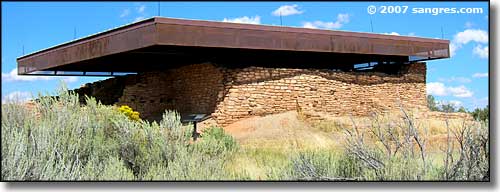
The National Park Service built a roof over the best preserved parts of Lowry Pueblo
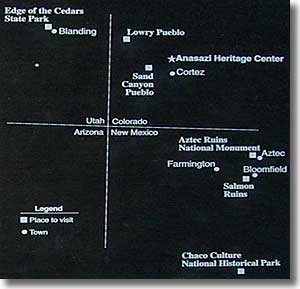
In the 1100’s AD, the eight, mostly underground, round, energy-efficient rooms of Lowry Pueblo provided warmth, indoor cooking space and a cozy atmosphere for gatherings. Some of these rooms are still visible while others are covered over. No two rooms are alike. Archaeologists call these rooms “pithouses” although we most often use the Hopi word “kiva.” When Lowry Pueblo was first excavated in the 1930’s, archaeologists believed that families moved out of the pithouses and into rooms built on the surface as their main living space around 750 AD. Then they realized that the round rooms became kivas and were used as family centers for both household and ceremonial activities until about 1300 AD. After about 1300 AD, the round rooms were no longer used for household activities and were used much more for social and ceremonial activities.
Lowry Pueblo was remodeled and added onto at least 6 or 7 times over the years. There was one flurry of construction between 1085 AD and 1105 AD that saw the pueblo expand from the first kiva and four-room core to a 40-room building. Lowry Pueblo was abandoned sometime after about 1300 AD.
Lowry Pueblo is famous for its’ four painted kivas: all of them had painted plaster on their lower walls. Kiva A (which has been filled in) had more than 25 coats of plaster, measuring more than 5” thick. Kiva B had similar painted plaster but attempts to preserve the mural in place failed. A fragment of that plaster and a photo taken in 1934 are on display at the Anasazi Heritage Center. All of the kiva murals at Lowry contain geometric design elements that are also found on petroglyphs, textiles and pottery fromt he same period. These patterns may be the beginnings of the more elaborate imagery found in later pottery, textile and petroglyph designs, some of which are still being produced today in the Rio Grande Pueblos.
Great Kivas are buildings for special community activities, including important religious ceremonies. Pottery remains and tree-ring dating indicate that the Great Kiva at Lowry was one of the first buildings, although it appears to have been remodeled many times over the years and was used continuously by succeeding generations.
A visitor from Santa Clara Pueblo interpreted the unique stone features on the floor of the Great Kiva as symbols of summer people and winter people. In each feature are platforms for four pillars to support a roof. Archaeologists found remnants of a wooden post and a single stone bead within each of these platforms.
Great Kiva activities helped define communities and develop a sense of social identity and, perhaps even, a sense of organized community religion. The people who lived nearby maintained the Great Kivas and may have even organized regional seasonal events. There are more than a dozen Great Kivas in southwestern Colorado with many more scattered all over the greater Four Corners region.
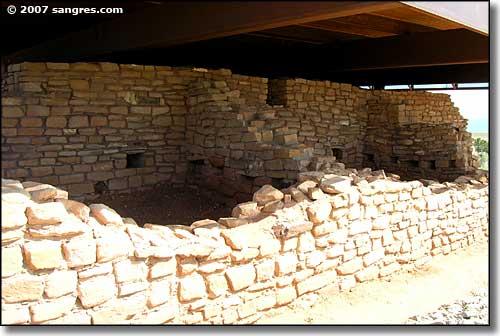
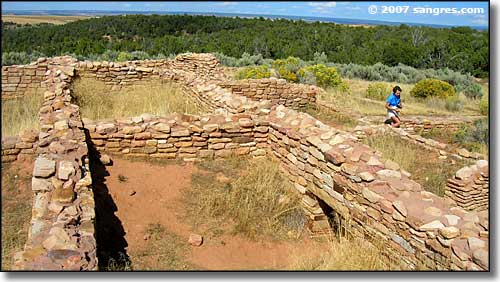
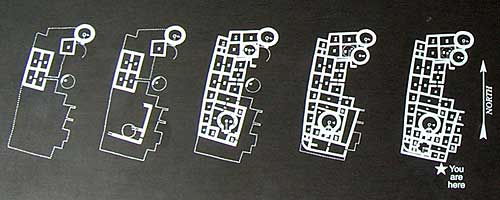
Archaeologists think the pueblo was built in stages, l to r
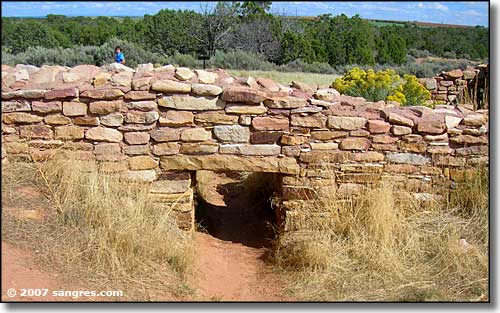
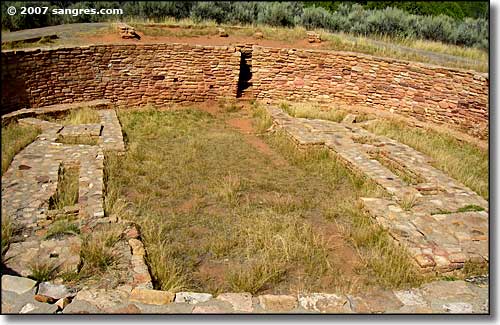
The Great Kiva at Lowry Pueblo
